For inventory tracking purposes and accurate fulfillment, ShipBob uses a lot tracking system that includes a lot feature, allowing you to separate items based on their lot numbers. If suppliers or manufacturers suddenly raise the price of raw materials or goods, a business may find significant discrepancies between their recorded vs. actual costs and profits. The FIFO valuation method generally enables brands to log higher profits – and subsequently higher net income – because it uses a lower COGS.
Assuming that prices are rising, this means that inventory levels are going to be highest as the most recent goods (often the most expensive) are being kept in inventory. This also means that the earliest goods (often the least expensive) are reported under the cost of goods sold. Because the expenses are usually lower under the FIFO method, net income is higher, resulting in a potentially higher tax liability. In addition to being allowable by both IFRS and GAAP users, the FIFO inventory method may require greater consideration when selecting an inventory method.
- But a FIFO system provides a more accurate reflection of the current value of your inventory.
- Average cost inventory is another method that assigns the same cost to each item and results in net income and ending inventory balances between FIFO and LIFO.
- So, which inventory figure a company starts with when valuing its inventory really does matter.
- It reduces the impact of inflation, assuming that the cost of purchasing newer inventory will be higher than the purchasing cost of older inventory.
Every time a sale or purchase occurs, they are recorded in their respective ledger accounts. However, as we shall see in following sections, inventory is accounted for separately from purchases and sales through a single adjustment at the year end. For example, say a business bought 100 units of inventory for $5 apiece, and later on bought 70 more units at $12 apiece. We https://www.wave-accounting.net/ also offer Develop API to enable a custom-built inventory management solution that ties into your accounting platform, to keep financial statements up-to-date, even when order volumes are skyrocketing. Rather, every unit of inventory is assigned a value that corresponds to the price at which it was purchased from the supplier or manufacturer at a specific point in time.
There are balance sheet implications between these two valuation methods. Because more expensive inventory items are usually sold under LIFO, the more expensive inventory items are kept as inventory on the balance sheet under FIFO. Not only is net income often higher under FIFO, but inventory is often larger as well. With this remaining inventory of 140 units, the company sells an additional 50 items. The cost of goods sold for 40 of the items is $10, and the entire first order of 100 units has been fully sold. The other 10 units that are sold have a cost of $15 each, and the remaining 90 units in inventory are valued at $15 each, or the most recent price paid.
For the sale of one snowmobile, the company will expense the cost of the older snowmobile – $50,000. Last-in, first-out values inventory on the assumption that the goods purchased last are sold first at their original cost. Under the LIFO system, many food items and goods would expire before being used, so this method is typically practiced with non-perishable commodities. In the tables below, we use the inventory of a fictitious beverage producer called ABC Bottling Company to see how the valuation methods can affect the outcome of a company’s financial analysis.
First in, first out method (FIFO) definition
Let’s say you’re running a medical supply business, and you’re calculating the COGS for the crutches you’ve sold in the last quarter. Looking at your purchase history, you see you’ve bought 550 new crutches during this time period, but each new order came with a different cost per item. For some companies, there are benefits to using the LIFO method for inventory costing. For example, those companies that sell goods that frequently increase in price might use LIFO to achieve a reduction in taxes owed. When a business buys identical inventory units for varying costs over a period of time, it needs to have a consistent basis for valuing the ending inventory and the cost of goods sold. FIFO is the best method to use for accounting for your inventory because it is easy to use and will help your profits look the best if you’re looking to impress investors or potential buyers.
What Type of Business FIFO Is Not Right For
One is the standard way in which purchases during the period are adjusted for movements in inventory. The second way could be to adjust purchases and sales of inventory in the inventory ledger itself. The problem with this method is the need to measure value of sales every time a sale takes place (e.g. using FIFO, LIFO or AVCO methods).
What Is Inventory?
The opposite of FIFO is LIFO (Last In, First Out), where the last item purchased or acquired is the first item out. Average cost inventory is another method that assigns the same cost to each item and results in net income and ending inventory balances between FIFO and LIFO. Finally, specific inventory tracing is used only when all components attributable to a finished product are known.
Check out our guide to the top inventory management software solutions to get started. LIFO systems are easy to manipulate to make it look like your business is doing better than it is. But a FIFO system provides a more accurate reflection of the current value of your inventory. This is one of the reasons why the International Financial Reporting Standards (IFRS) Foundation requires businesses to use FIFO. Suppose the number of units from the most recent purchase been lower, say 20 units. We will then have to value 20 units of ending inventory on $4 per unit (most recent purchase cost) and the remaining 3 units on the cost of the second most recent purchase (i.e., $5 per unit).
When the price of goods increases, those newer and more expensive goods are used first according to the LIFO method. This increases the overall cost of goods sold and leaves the cheaper, earlier purchased goods as inventory, which may end up not even being sold under the LIFO model. A more common way to calculate the COGS under FIFO is to subtract the cost of ending inventory from the cost of total goods available for sale. As given above, the total cost of the 130 gallons available for sale during the period was $285.
Understanding the First-in, First-out Method
LIFO stands for last in, first out, which assumes goods purchased or produced last are sold first (and the inventory that was most recently purchased will be sent to customers before the oldest inventory). It is an alternative valuation method and is only legally used by US-based businesses. First in, first out (FIFO) is an inventory method that assumes the first goods purchased are the first goods sold. This means that older inventory will get shipped out before newer inventory and the prices or values of each piece of inventory represents the most accurate estimation. FIFO serves as both an accurate and easy way of calculating ending inventory value as well as a proper way to manage your inventory to save money and benefit your customers. Typical economic situations involve inflationary markets and rising prices.
Subtracting the cost of ending inventory of $125 leaves you with $160 for the COGS. Our new inventory quantity available for sale during the period is 130 gallons (100+10+20), with a cost of $285.00 ($200 +$25+$60). In this article, we’ll discuss how to calculate the value of inventory and the cost of goods sold (COGS) using the FIFO method as well as the advantages and disadvantages of using the FIFO inventory method. Note that the $42,000 cost of goods sold and $36,000 ending inventory equals the $78,000 combined total of beginning inventory and purchases during the month. Milagro’s controller uses the information in the preceding table to calculate the cost of goods sold for January, as well as the cost of the inventory balance as of the end of January. The average cost method produces results that fall somewhere between FIFO and LIFO.
As a result, LIFO doesn’t provide an accurate or up-to-date value of inventory because the valuation is much lower than inventory items at today’s prices. Also, LIFO is not realistic for many companies because they would not leave their older inventory sitting idle in stock while using the most recently acquired inventory. The First-In, First-Out (FIFO) method assumes that the first unit making its way into inventory–or the oldest inventory–is the sold first. For example, let’s say that a bakery produces 200 loaves of bread on Monday at a cost of $1 each, and 200 more on Tuesday at $1.25 each. FIFO states that if the bakery sold 200 loaves on Wednesday, the COGS (on the income statement) is $1 per loaf because that was the cost of each of the first loaves in inventory. The $1.25 loaves would be allocated to ending inventory (on the balance sheet).
Under the entrepreneur blog sites, the COGS for each of the 60 items is $10/unit because the first goods purchased are the first goods sold. Of the 140 remaining items in inventory, the value of 40 items is $10/unit, and the value of 100 items is $15/unit because the inventory is assigned the most recent cost under the FIFO method. QuickBooks Online is our best small business accounting software that can compute inventory costs using the FIFO method.

